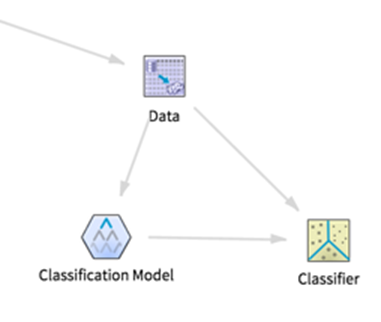Classifier (DB)
Uses any input classification model to apply a classification prediction to the input data set.
Information at a Glance
Algorithm
The Team Studio Classifier operator is used to predict the probability of the occurrence of the event based on the model generated by the training of Alpine Forest, Decision Tree, K-Means (Hadoop), Logistic Regression, Naive Bayes, Neural Network, or SVM Classification operator models.
Input
The input data set must contain the columns such that the names are the same as the columns in the data set selected for model training with the exception of the dependent column. The Classifier operator must have both of the following.
Configuration
| Parameter | Description |
|---|---|
| Notes | Any notes or helpful information about this operator's parameter settings. When you enter content in the Notes field, a yellow asterisk is displayed on the operator. |
| Output Schema | The schema for the output table or view. |
| Output Table | The table path and name where the results are output. By default, this is a unique table name based on your user ID, workflow ID, and operator. |
| Storage Parameters | Advanced database settings for the operator output. Available only for
TABLE output.
See Storage Parameters Dialog Box for more information. |
| Drop If Exists | Specifies whether to overwrite an existing table. |
Output
- Visual Output
-
The Classifier outputs its prediction columns with the columns of the input data set into a prediction table location specified by user.
The data rows of the output table/view displayed (up to 2,000 rows of the data).
For example, the output for a dependent column, srsdlqncy, might look like the following.
- Data Output
-
The Classifier operator outputs the following standardized three prediction columns:
- P_dependent_column_name: The predicted value which should be one of the possible returning values of the dependent column.
- C_dependent_column: The confidence of obtaining the result being the P_dependent_column_name predicted value.
- C_dependent_column_details: The confidence values associated with the dependent column's possible values.
- Data Output
- Connect this operator to succeeding operators.



